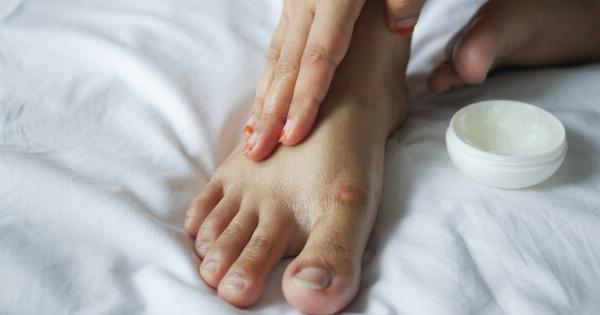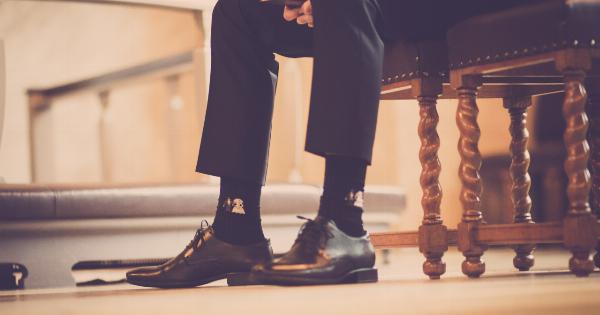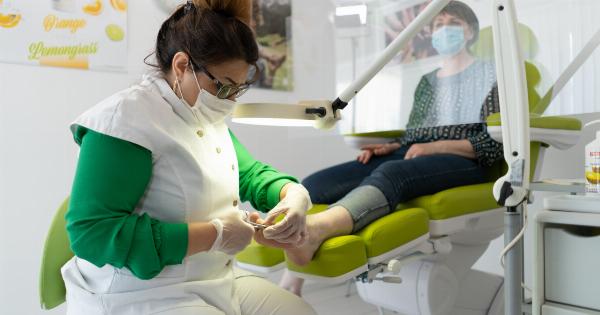Fungal infections are common skin conditions caused by fungi that thrive in warm and moist environments. These infections can affect various parts of the body, including the legs.
In this article, we will discuss the symptoms, causes, and treatment options for fungal infections on the legs, as well as provide tips on how to prevent them.
What are Fungal Infections on the Legs?
Fungal infections on the legs, also known as dermatophytosis or tinea, are caused by various types of fungi. The most common types of fungal infections on the legs include athlete’s foot, ringworm, and jock itch.
Symptoms of Fungal Infections on the Legs
The symptoms of fungal infections on the legs may vary depending on the type of infection. However, there are some common symptoms to watch out for:.
1. Itching and Redness
One of the primary symptoms of a fungal infection is persistent itching and redness on the affected area. This may be accompanied by a burning sensation or an uncomfortable feeling.
2. Scaling and Peeling Skin
Fungal infections can cause the skin on the legs to become scaly and start peeling. This often leads to flaking of the skin, which can be unsightly and may cause discomfort.
3. Cracked or Blistered Skin
In some cases, fungal infections can cause the skin on the legs to crack or develop blisters. This can be painful, especially when walking or engaging in physical activities.
4. Discolored or Thickened Nails
Fungal infections can also affect the toenails, leading to discoloration, thickening, and crumbling of the nails. This condition is known as onychomycosis.
5. Unpleasant Odor
Fungal infections on the legs can cause an unpleasant odor due to the growth of fungi. This can be embarrassing and may affect one’s self-confidence.
Causes of Fungal Infections on the Legs
Fungal infections on the legs are primarily caused by the overgrowth of fungi in warm and wet environments. The following factors can increase the risk of developing a fungal infection:.
1. Poor Hygiene
Poor hygiene practices, such as not washing the feet regularly, can create an environment conducive to fungal growth. It is important to clean and dry the feet thoroughly to prevent fungal infections.
2. Sweaty Footwear
Wearing tight or non-breathable footwear can trap moisture, leading to sweaty feet. This creates an ideal breeding ground for fungi, increasing the risk of developing an infection.
3. Walking Barefoot in Public Areas
Walking barefoot in public areas, such as locker rooms, communal showers, and swimming pools, can expose the feet to fungi. It is essential to wear protective footwear, such as flip-flops, to minimize the risk.
4. Weakened Immune System
A weakened immune system can make an individual more susceptible to fungal infections. Certain medical conditions, such as diabetes or HIV/AIDS, and medications that suppress the immune system can increase the risk.
Treatment Options for Fungal Infections on the Legs
There are several treatment options available for fungal infections on the legs. The choice of treatment depends on the severity and type of infection. Here are some common treatment options:.
1. Antifungal Creams or Ointments
Topical antifungal creams or ointments are often the first line of treatment for fungal infections on the legs. These medications help to eliminate the fungi and relieve the associated symptoms.
It is important to follow the instructions provided by the healthcare professional and complete the full course of treatment.
2. Oral Antifungal Medications
In severe cases or when topical treatments do not provide relief, oral antifungal medications may be prescribed. These medications work from within the body to eliminate the fungi.
It is essential to take the prescribed dosage as directed by the healthcare professional.
3. Antifungal Powders or Sprays
Antifungal powders or sprays can be used to keep the feet dry and minimize moisture, reducing the risk of fungal infections.
They are especially useful for individuals prone to sweaty feet or those who engage in physical activities that cause excessive sweating.
4. Proper Foot Hygiene
Maintaining proper foot hygiene is crucial for preventing and treating fungal infections on the legs.
This includes washing the feet regularly with soap and water, drying them thoroughly (especially between the toes), and wearing clean and breathable socks.
5. Avoiding Tight and Non-Breathable Footwear
Opting for well-fitting shoes made of breathable materials, such as leather or mesh, can help prevent fungal infections on the legs. It is important to choose footwear that allows air circulation and absorbs moisture.
Prevention Tips for Fungal Infections on the Legs
Preventing fungal infections on the legs is often easier than treating them. Here are some tips to help reduce the risk of developing a fungal infection:.
1. Keep the Feet Clean and Dry
Proper foot hygiene is key to preventing fungal infections. Always wash your feet with soap and water, paying extra attention to the spaces between the toes. After washing, thoroughly dry your feet, including between the toes, using a clean towel.
2. Wear Breathable Footwear
Choose shoes made of breathable materials to allow air circulation and prevent excessive sweating. Avoid wearing tight or non-breathable footwear, as they can create a moist environment ideal for fungal growth.
3. Change Socks Regularly
Moisture-absorbing socks made of natural materials, such as cotton or bamboo, can help keep the feet dry. Change your socks regularly, especially if they become damp or wet due to sweating or exposure to water.
4. Protect Your Feet in Public Areas
When using public facilities like locker rooms, communal showers, or swimming pools, always wear protective footwear, such as flip-flops or waterproof sandals. This will reduce the risk of coming into direct contact with fungi.
5. Avoid Sharing Personal Items
Avoid sharing personal items like towels, socks, shoes, or nail clippers with others, as fungal infections can easily spread through contaminated items. Keep your personal items separate and clean to minimize the risk.
Conclusion
Fungal infections on the legs can be bothersome and uncomfortable. By recognizing the symptoms, understanding the causes, and following prevention tips, it is possible to minimize the risk of developing these infections.
If you suspect a fungal infection, consult a healthcare professional who can provide an accurate diagnosis and recommend appropriate treatment. Remember, maintaining good foot hygiene is essential for healthy and infection-free skin.




























